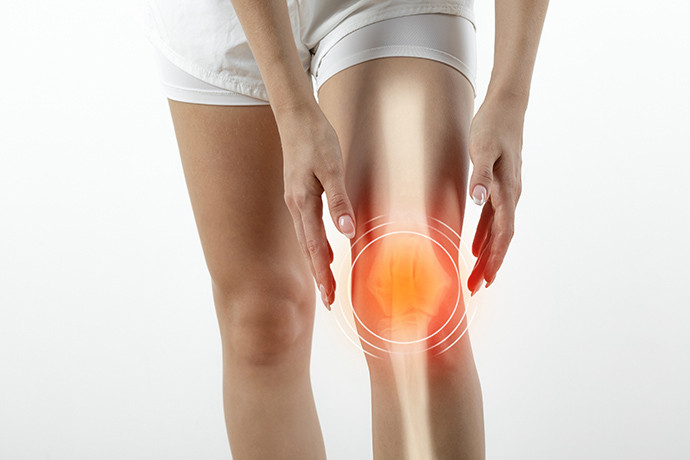
Osteoarthritis, also known as OA, is a common joint condition that affects many people around the world. It causes pain, stiffness, and swelling in the joints, especially in the knees, hips, and hands. OA is a long-term condition that can get worse over time if not managed properly. Understanding oa treatment and how to treat it can help people live a more comfortable and active life.
What is OA
OA is a condition that affects the cartilage in the joints. Cartilage is a smooth and slippery tissue that covers the ends of bones. It helps the bones move smoothly over each other. In OA, the cartilage breaks down and wears away. This causes the bones to rub against each other, which leads to pain, swelling, and reduced movement.
OA usually develops slowly and gets worse over time. It is more common in older people, but younger people can also get it due to injury or joint problems.
Common Signs of OA
Some signs of OA include:
-
Joint pain during or after movement
-
Stiffness in the joint, especially in the morning
-
Swelling around the joint
-
A grating sound or feeling when the joint moves
-
Reduced flexibility or range of motion
These symptoms can vary from mild to severe and may get worse with age or more joint use.
Causes of OA
There are many factors that can lead to OA, such as:
-
Age: The risk of OA increases as people get older
-
Joint injury: Past injuries can lead to OA later in life
-
Repeated stress: Jobs or activities that put stress on joints
-
Obesity: Extra weight puts more pressure on the joints
-
Genetics: OA can run in families
-
Bone deformities: Some people are born with joint problems
Diagnosis of OA
To diagnose OA, a doctor will look at your medical history and do a physical check of your joints. They may ask about your symptoms and how long you have had them. They may also take X-rays to see if the cartilage has worn down or the bones have changed shape. In some cases, other tests may be done to rule out other conditions.
OA Treatment Options
There is no cure for OA, but many treatment options can help reduce pain and improve joint function. These treatments depend on how severe the condition is and which joints are affected.
Lifestyle Changes
Simple changes in daily habits can make a big difference:
-
Losing weight: Reducing body weight helps ease pressure on the joints
-
Exercise: Gentle activities like walking, swimming, or stretching help keep joints flexible
-
Rest: Allowing joints to rest when painful can prevent further damage
-
Support: Using braces or shoe inserts may help reduce pressure on joints
Medications
Medicines can help control pain and swelling. Some common options are:
-
Pain relievers: Paracetamol or other simple painkillers
-
Anti-inflammatory drugs: These help reduce swelling and relieve pain
-
Creams or gels: Applied directly to the joint to reduce pain
-
Injections: Steroid injections may be used in severe cases for short-term relief
Always take medication as advised by a doctor and never take more than the recommended dose.
Physical Therapy
Physical therapy can be very helpful in treating OA. A trained therapist can teach you exercises to strengthen the muscles around the joint. This can reduce pressure on the joint and improve movement. Therapy may also include massage, heat or cold treatment, and special equipment to support the joint.
Assistive Devices
Many people with OA benefit from using walking sticks, canes, or braces. These tools help support the joint and make daily activities easier. Special footwear or cushions may also provide comfort.
Surgical Treatment
When other treatments do not help and the pain becomes severe, surgery may be needed. Types of surgery include:
-
Joint replacement: The damaged joint is replaced with an artificial one
-
Joint repair: Damaged parts of the joint are cleaned or reshaped
-
Joint fusion: Two bones are joined together to reduce pain
Surgery is usually only considered after trying other treatments and when OA greatly affects quality of life.
Alternative Options
Some people try natural or alternative methods for OA. These may include:
-
Herbal remedies
-
Acupuncture
-
Dietary supplements like glucosamine
However, these methods should always be discussed with a healthcare provider to ensure they are safe and effective.
Mental Health and Support
Living with OA can be hard, especially if the pain affects sleep, work, or hobbies. It is important to take care of your mental health. Talking to others with the same condition, joining support groups, or speaking with a counselor can help reduce stress and improve your mood.
Preventing OA from Getting Worse
While OA cannot always be prevented, there are steps to avoid making it worse:
-
Stay active without overdoing it
-
Maintain a healthy weight
-
Protect joints during physical activity
-
Avoid heavy lifting or repetitive movements
-
Seek early treatment when symptoms begin
Regular checkups with a doctor can also help track the condition and make sure the treatment plan is working.
Living with OA
Many people live full and active lives with OA. The key is to manage symptoms and follow a treatment plan. Being informed, staying active, and working with a healthcare team can help you stay in control of your joint health.
Final Thoughts
OA treatment is about managing the condition in the best possible way. By understanding the symptoms and exploring different treatment choices, people with OA can improve their quality of life. The goal is to reduce pain, improve movement, and help people stay independent.
For expert care and effective OA treatment, you can contact Hash Clinics, where professional help is available to guide you through every step of your journey to better joint health.
Comments on “Effective and Simple Guide for OA Treatment and Pain Relief”